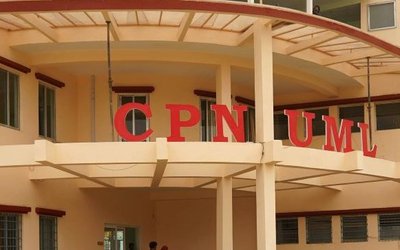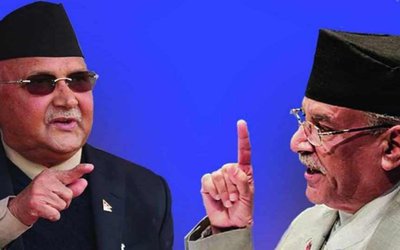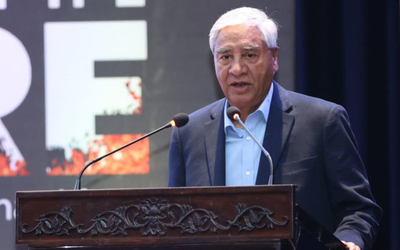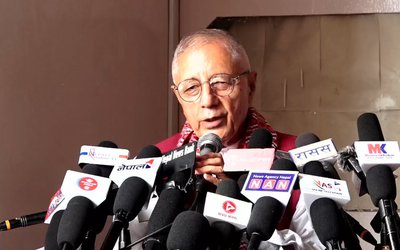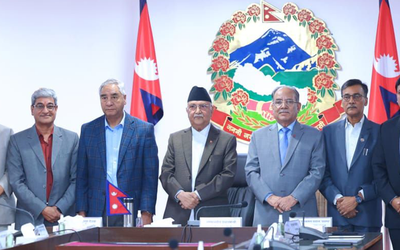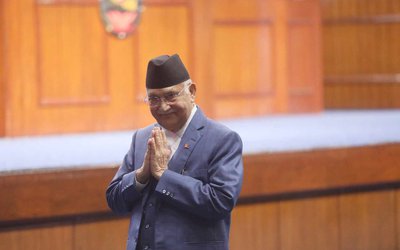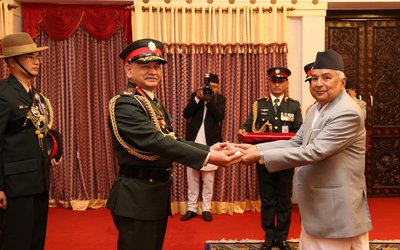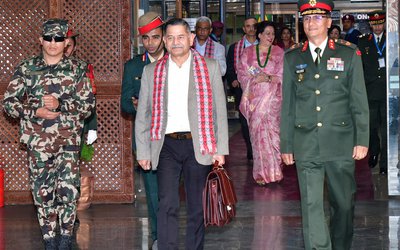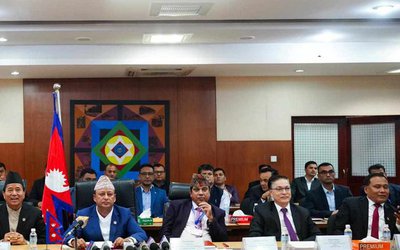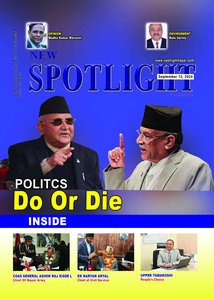
Although Nepal is a country with an overwhelming majority of the Hindus where even its secular constitution recognizes this fact by giving the ancient religion and tradition the government protection, the recent elections seem to have favored otherwise.
For the first time in its history, communists came to control the state through the ballots, challenging Mao’s theory that the power comes from the barrel of the gun. Both the CPN-UML and UCPN-Maoist launched violent insurgency in their initial phases. However, both the parties have captured the power by the strength of the ballot now. Interestingly, RPP-Nepal and RPP, monarchist and Hindu party, are in their coalition.
First, the House of Representatives elected CPN-UML leader K.P. Sharma Oli, a former Naxalite leader, as the prime minister, Omshari Gharti Magar, a former Maoist platoon commander, as the speaker of the Legislature-Parliament, Vidya Bhadari, the widow of veteran communist leader late Madan Kumar Bhandari, as the president. Finally Nanda Kishor Pun, the Maoist People’s Liberation Army chief, was elected as the vice president.
Although Nepali Congress Party is the largest party in the Legislature Parliament, it remains confined in the opposition bench. Nepalese politics has a little to do with political ideologies. Despite his distinct ideology, leader of democratic Nepali Congress Party Girija Prasad Koirala gets the credit for bringing the communists in the mainstream power politics.
Before 1990, communists were a very insignificant political force in Nepal compared to Nepali Congress and the erstwhile Panchayat loyals. However, Nepali Congress and communists launched a joint agitation which brought the communists to the forefront of power. Despite his anti-communist posture, late Koirala was responsible to make this alliance possible.
In 2005, Girija Prasad Koirala again led the seven party’s alliance to bring the Maoists into the mainstream through a comprehensive peace process. Interestingly, democratic leader Koirala was backed by democratic India both the times, even in facilitating the negotiations and forming the alliance, the first against absolute monarchy and second against abolition of monarchy.
However, Nepali Congress and CPN-UML and UCPN-Maoist, two communist factions, were together till the promulgation of the new constitution. India sided with Madheshi demands, expressing its displeasure with the new constitution of Nepal.
When the communists were in the position to capture the state through ballots, Nepali Congress was in no position to preempt the move.
Of the 601 seats, six communist parties present in the Legislature Parliament held over 275 votes, a mere 30 votes less to secure a majority in the parliament. ““We will secure the majority in the next elections. If we are united, no one can defeat us,” thundered Aryan Man Bijjukchhe, another communist leader from Bhaktapur. "Only unity of communist parties can defeat the hegemony attitude of India which has been imposing economic blockade against us.”
Although theoretically Nepal’s communist leaders also view Marx, Lenin, Stalin and Mao as their leaders, waving the hammer and sickle flags, they are different. Nepalese communists are more localized and they have been projecting themselves as crusaders of Nepali nationalism with anti-Indian slogans.
Although the Nepalese communist movement flourished with support and sympathy from India, they have established themselves as a power to challenge the Indian hegemony. Thousands of young Nepalese have grown up in their myth that is in the various positions of state.
“Communists are good in opposition as they champion nationalism against Indian hegemony. They do the opposite when they are in the ruling sides. Experiences have shown that they don’t hesitate to undermine national interests at the cost of power and compromise with India,” said professor Dr. Surendra K.C, who did his Ph.D on communist movement of Nepal. “Let’s hope, they will come differently this time.”
Although the recent elections of communist leaders in all the top state positions do not make major differences in the current state of affairs, this will definitely boost the radicals among the younger population.

Keshab Poudel
Poudel is the editor of New Spotlight Magazine.
- NEPAL-BANGLADESH POWER TRADE : A Significant Achievement
- Nov 21, 2024
- BEEN: Honoring The Contribution
- Oct 22, 2024
- Nepal Commemorates 7 October And Calls For Release Of All Hostages Including Bipin Joshi
- Oct 07, 2024
- JAPANESE ENVOY KIKUTA YUTAKA: Charismatic Diplomat
- Sep 25, 2024
- POLITCS: Do Or Die
- Sep 13, 2024

